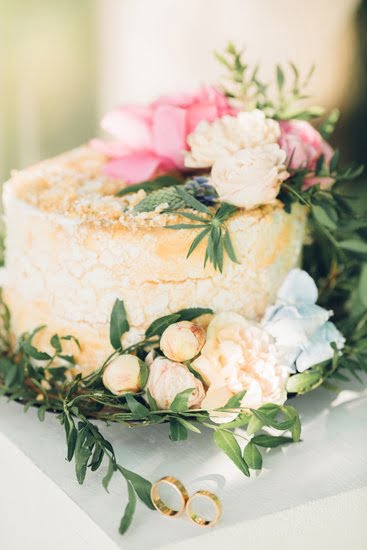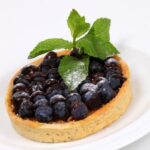The timeless art of decorating cakes with fresh flowers brings a touch of natural beauty and elegance to any occasion. For centuries, flowers have been used as decorative elements in cake designs, adding a pop of color and a delicate touch. From simple home-baked treats to extravagant wedding cakes, the addition of fresh flowers can elevate the aesthetic and create a stunning centerpiece.
Using fresh flowers for cake decoration is not just about aesthetics; it also has historical significance. In many cultures, floral decorations on cakes are symbols of celebration and abundance. The tradition dates back centuries when flowers were not only used for their visual appeal but also for their fragrance and symbolic meanings. Understanding the history behind this age-old practice adds depth and meaning to the art of cake decorating.
In this article, we will explore everything you need to know about decorating cakes with fresh flowers. We will delve into the wide array of flower options available and provide tips for choosing the right blooms that complement different cake styles. Additionally, we will discuss how to properly prepare and handle fresh flowers to ensure they are food-safe and free from contamination.
Join us on this journey as we discover the techniques for safely incorporating fresh flowers into your cake designs and explore creative ways to enhance your culinary creations. Whether you’re an amateur baker or a professional pastry chef, this guide will inspire you to unleash your creativity and showcase nature’s beauty through cake decoration with stunning fresh flowers.
Choosing the Right Flowers for Your Cake
When it comes to decorating cakes with fresh flowers, it is essential to choose the right blooms that are safe for consumption and complementary to your cake design. Not all flowers are suitable for use on cakes, as some may contain toxins or harmful chemicals. Therefore, it is crucial to be knowledgeable about which flowers are safe and suitable for cake decoration.
To ensure food safety, it is recommended to use organic and pesticide-free flowers. These flowers are grown without the use of harmful chemicals, making them safer for consumption. When selecting flowers for your cake, keep in mind the specific style and theme of your cake. Delicate blooms like roses, peonies, or orchids can add elegance to a wedding or formal occasion cake. On the other hand, whimsical cakes may call for vibrant daisies or sunflowers.
| Flower | Suitable Occasions |
|---|---|
| Roses | Weddings, anniversaries |
| Orchids | Elegant parties, special events |
| Daisies | Spring-themed parties, birthdays |
| Lilies | Baby showers, religious celebrations |
In addition to considering aesthetic appeal and suitability for occasions, take into account the flavor and color of your cake. For example, lavender complements a lemon-flavored cake well due to its similar citrusy notes. Similarly, if you have a pastel-colored cake, consider using flowers in the same color palette to create a harmonious design.
Preparing and Handling Fresh Flowers for Cake Decoration
Preparing and handling fresh flowers properly is crucial when it comes to decorating cakes. Not only does it ensure that the flowers are safe to eat, but it also helps maintain their freshness and prevent wilting. In this section, we will discuss the steps for cleaning and preparing flowers for use on cakes, techniques for ensuring they are food-safe, and proper storage methods.
How to Properly Clean and Prepare Flowers
Cleaning the flowers is an essential step in preparing them for cake decoration. Start by carefully removing any dirt or debris from the petals and leaves. Gently rinse the flowers under cool water, taking care not to damage them. If necessary, you can use a soft brush to remove any remaining dirt.
After cleaning, trim the stems of the flowers to an appropriate length for your cake design. Make sure to remove any thorns or excess foliage that may come into contact with the cake. It’s also recommended to remove pistils and stamens from certain flowers as they can either cause allergies or leave a bitter taste.
Techniques for Ensuring Food-Safety
When using fresh flowers on a cake, it’s important to ensure that they are safe for consumption. Avoid using any flowers that have been treated with pesticides or chemicals. Opting for organic flowers is always a good choice as they are grown without harmful substances.
To further ensure food safety, consider creating a barrier between the cake and flowers by placing a piece of parchment paper or plastic wrap underneath them. This will prevent direct contact between the flowers and the cake surface while still allowing you to achieve a beautiful arrangement.
Proper Storage Techniques
Proper storage of decorated cakes with fresh flowers is essential to maintain their freshness and beauty. If you need to store a flower-decorated cake in advance, keep it refrigerated at around 40°F (4°C) until it is ready to be served. However, keep in mind that not all flowers thrive in cold temperatures, so you may need to remove some fragile blooms before refrigerating the cake.
To prevent wilting, mist the flowers with water using a spray bottle periodically. It’s best to apply the water lightly and avoid soaking the flowers or the cake. If you’re transporting the cake, use a sturdy box and secure the flowers in place to minimize movement.
By following these preparation and handling techniques, you can ensure that your fresh flower decorated cake looks stunning and stays safe for consumption. Now that we have covered this important aspect of working with fresh flowers, let’s move on to exploring different cake designs and their compatibility with flower arrangements.
Design Inspirations
When it comes to decorating cakes with fresh flowers, the design possibilities are endless. The combination of cake styles and flower arrangements can create a stunning centerpiece for any occasion. Whether you’re planning a rustic wedding, a whimsical birthday party, or an elegant anniversary celebration, there are many ways to incorporate fresh flowers into your cake design.
Exploring different cake designs
The first step in creating a beautiful floral cake is to consider the style of the cake itself. Are you going for a classic tiered cake or a more modern naked cake? The design of the cake will dictate how the flowers can be arranged and showcased.
For a tiered cake, you may choose to have clusters of flowers between each layer or cascading flowers down one side. With a naked cake, you can opt for a simple arrangement of blooms on top or scattered throughout the layers.
Matching flower selections with cakes
Another important aspect to consider is matching the flower selections with the flavor, colors, and theme of the cake. For example, if you have chosen a lemon-flavored cake with pale yellow icing, you could enhance its visual appeal by adding delicate white daisies or bright yellow roses as decoration. If you have a chocolate ganache-covered cake, vibrant red or purple roses would create an eye-catching contrast.
Examples and tips for creating stunning flower arrangements
To help ignite your creativity, here are some examples and tips for creating stunning flower arrangements on cakes:
- A romantic wedding cake: Opt for soft pastel blooms such as peonies or hydrangeas. Arrange them in cascading fashion down one side of the tiered cake for an ethereal look.
- A whimsical birthday cake: Use colorful wildflowers like daisies and cornflowers to create a cheerful vibe. Scatter the flowers around the cake in a natural and organic manner.
- An elegant anniversary cake: Choose delicate flowers like roses or orchids in shades of ivory, pink, or lavender. Create a neat and sophisticated arrangement on top of the cake.
Remember to take into account the overall aesthetic and mood you want to achieve with your cake design. Fresh flowers can complement any style, adding a touch of natural beauty and elegance that is sure to impress your guests.
Techniques for Safely Decorating Cakes with Fresh Flowers
Decorating cakes with fresh flowers can be a stunning way to elevate the visual appeal of your baked creations. However, it is essential to handle the flowers safely and ensure that they are food-safe. In this section, we will explore some techniques for safely decorating cakes with fresh flowers.
Step-by-Step Instructions
- Clean and prepare the flowers: Start by gently cleaning the flowers with water to remove any soil or debris. Trim off any excess leaves or thorns from the stems. It is crucial to choose organic, pesticide-free flowers to avoid any contamination.
- Proper positioning and placement: Consider the overall design of your cake and where you want to place the flowers. Select blooms that complement the color scheme and theme of your cake. Remember to avoid placing flowers directly on exposed cake surfaces; instead, use wax paper or floral picks as a barrier.
- Secure attachment without damage: To securely attach the flowers, you can use supports such as toothpicks, floral wire, or skewers. Carefully insert them into the base of each flower stem and then gently insert them into the cake at an angle, ensuring stability without damaging the cake structure.
| Steps | Techniques for Safely Decorating Cakes with Fresh Flowers |
|---|---|
| Clean and prepare the flowers | Gently clean the flowers with water; trim off excess leaves or thorns; choose organic, pesticide-free blooms. |
| Proper positioning and placement | Select flowers that complement the cake’s color scheme and theme; avoid placing them directly on exposed cake surfaces. |
| Secure attachment without damage | Use supports like toothpicks, floral wire, or skewers; insert them into the base of flower stems and then into the cake at an angle. |
Tips for Enhancing the Aesthetic
- Consider the height and size of the flowers. Varying heights will add visual interest to your cake design.
- Combine different types of flowers and foliage to create texture and depth.
- For a more cohesive look, incorporate floral elements from other parts of your event decor, such as centerpieces or bouquets.
Remember that not all flowers are safe for consumption, so it is vital to inform guests which flowers are purely decorative. In the next section, we will explore the concept of edible flowers and how they can be incorporated into cake decoration.
Edible Flowers
When it comes to cake decoration, fresh flowers provide a natural beauty and elegance that is hard to replicate with other decorative elements. However, what if these flowers not only enhanced the aesthetics of the cake but also added a delightful twist to its taste? This is where edible flowers come into play. Incorporating edible flowers in cake decoration has become a popular trend in recent years, adding both visual appeal and unique flavors to your confectionery creations.
The concept of using edible flowers for cake decoration offers numerous advantages. Firstly, edible flowers add a burst of color and freshness to any cake design, elevating its overall aesthetic appeal. From dainty violet pansies to vibrant nasturtiums, there are numerous edible flower options available that can complement any cake flavor or theme. Additionally, when paired with complementary ingredients such as citrus zest or floral-flavored frosting, edible flowers bring out their natural flavors and create layered taste experiences.
Popular choices for edible flowers include pansies, marigolds, roses, violets, borage blossoms, and chamomile. When incorporating these flowers into your cake designs, it’s crucial to ensure they have been grown organically and without the use of pesticides or harmful chemicals. It’s recommended to grow your own edible flowers or purchase them from a trusted source that adheres to organic practices. This guarantees that the blooms are safe for consumption and free from any potential toxins.
To incorporate these delicate yet flavorful blooms into your cakes, there are several techniques you can employ. One option is to place whole flowers on top of frosted cakes or gently press them onto buttercream surfaces for an effortless look.
Another technique involves separating the petals from the flower centers and scattering them over cupcakes or creating intricate petal patterns on larger cakes. You can even infuse floral flavors into your batters by steeping the petals in warm milk before adding them to the mixture.
Tips for Ensuring Food Safety and Hygiene
When decorating cakes with fresh flowers, it is crucial to prioritize food safety and hygiene. While the use of fresh flowers can add a stunning visual element to any cake, it is essential to take precautions to ensure that the flowers are safe for consumption and do not pose any health risks. Here are some tips for ensuring food safety and hygiene when using fresh flowers on cakes:
- Choose Flowers from a Trusted Source: It is important to select flowers from a reputable source that guarantees they are safe for consumption. Avoid using flowers from florists or garden centers that may have been treated with pesticides or other harmful chemicals. Instead, opt for organic, pesticide-free flowers that are specifically labeled as edible.
- Identify Safe Flower Varieties: Not all flowers are safe to be used as cake decorations, as some may be toxic or cause allergies in certain individuals. Before using any flower on a cake, familiarize yourself with a list of edible flower varieties that are safe for consumption. Some common edible flower options include roses, violets, pansies, lavender, marigolds, and chamomile.
- Properly Clean the Flowers: Before placing the flowers on the cake, make sure to clean them thoroughly to remove any dirt or contaminants. Gently rinse the flowers under cool water and pat them dry with paper towels. Be cautious not to damage delicate petals or remove any insecticides present on non-organic blooms.
- Separate Flowers from Cake Surface: To ensure maximum food safety and hygiene, it is recommended to create a barrier between the flower stems and the cake surface by using floral tape or inserting stems into plastic straws before positioning them on top of the cake. This prevents direct contact between the flowers and the cake icing.
- Inform Guests about Flower Decorations: It is important to notify guests about the presence of fresh flowers on the cake so that those with allergies or sensitivities can make informed choices about consuming the cake. Display a small sign or label indicating that the flowers are edible and have been sourced from a trusted, food-safe supplier.
By following these tips for ensuring food safety and hygiene, you can confidently decorate cakes with fresh flowers, knowing that your creations are not only visually appealing but also safe for consumption.
Maintenance and Preservation of Fresh Flower Decorated Cakes
Decorating a cake with fresh flowers not only adds a touch of natural beauty and elegance but also creates a stunning centerpiece for any occasion. However, it is important to properly maintain and preserve the fresh flower decorations to ensure they remain vibrant and visually appealing throughout the event. This section will provide valuable tips on how to extend the lifespan of fresh flowers on cakes and preserve them as keepsakes after consumption.
To prolong the freshness of the flowers on your decorated cake, there are several steps you can take. First and foremost, it’s vital to choose flowers that are in their prime state, with petals that are just starting to open.
This will allow them to gradually bloom while on display, ensuring their vibrancy throughout the event. Additionally, make sure to keep the flowers hydrated by lightly misting them with water every few hours or keeping them in a cool environment until the cake is ready to be served.
Another important aspect of maintaining fresh flower decorations is avoiding direct contact between the flowers and the cake’s frosting or icing. This can be achieved by using a barrier such as wax paper or plastic wrap between the flower stems and the cake’s surface. It’s also advisable to place small pieces of parchment paper or aluminum foil underneath each flower arrangement to prevent any potential transfer of moisture from affecting the cake’s texture.
Once your event has come to an end, you may want to preserve some of the fresh flowers as keepsakes or create lasting memories from your beautifully decorated cake. A popular method for preserving flowers is air-drying them. Simply hang the flower arrangements upside down in a dry and dark location for approximately two weeks until they have fully dried out. You can then use these preserved flowers for various purposes such as home decor or crafts.
By following these maintenance and preservation tips, you can ensure that your fresh flower decorated cake remains visually stunning throughout your event and create lasting memories beyond its consumption. With proper care, these delicate blooms can continue to showcase nature’s beauty long after the cake has been enjoyed.
Conclusion
Fresh flowers have proven to be a timeless and exquisite element in cake decoration. Their natural beauty and elegance bring a touch of grace to any occasion. Throughout history, flowers have been used to adorn cakes, adding both visual appeal and a sense of celebration. Now, armed with knowledge on how to choose the right flowers, properly prepare and handle them, and safely incorporate them into cake designs, you can elevate your cake designs to new heights.
Choosing the right flowers for your cake is crucial. Not all flowers are safe for consumption, so it is important to do your research and select only those that are non-toxic and pesticide-free. Consider the style of the cake when choosing blooms – delicate petals may work well on a vintage-inspired design, while bold blossoms can make a statement on a modern cake.
Properly preparing and handling fresh flowers is essential for food safety. Thoroughly clean the flowers before use and remove any leaves or stems that might contaminate the cake. Additionally, ensure proper storage techniques to maintain freshness and prevent wilting.
Design inspirations are plentiful when it comes to using fresh flowers on cakes. From simple single bloom arrangements that add a hint of color to elaborate cascading displays, there is no limit to what you can create. By matching flower selections with cake flavors, colors, and themes, you can truly make your cakes stand out.
Incorporating edible flowers into your cake decoration not only adds an extra layer of flavor but also opens up endless possibilities for creativity. Edible flowers offer unique tastes, stunning appearance, and versatility in decorating cakes.
Maintaining food safety is imperative when using fresh flowers on cakes. Ensure guests are informed about the use of fresh flowers in the decoration process. Address potential concerns around allergens or toxicity by sourcing from trusted suppliers and avoiding certain flower varieties known to cause problems.
Lastly, once that beautiful creation has been enjoyed by all with delight, consider preserving the decorative flowers as keepsakes or repurpose them in home décor or crafting projects. By extending the lifespan of fresh flower decorated cakes, you can continue to showcase their beauty long after consumption.
In conclusion, decorating cakes with fresh flowers is an art that never goes out of style. The versatility and beauty they bring to cake design elevates any occasion and allows you to express your creativity with nature’s most exquisite elements. So, unleash your imagination, experiment with various flower arrangements, and embrace the joy and satisfaction of showcasing nature’s beauty through cake decoration.
Frequently Asked Questions
Can you use fresh flowers to decorate cakes?
Fresh flowers can indeed be used to decorate cakes, adding a touch of natural beauty and elegance. However, it is vital to ensure that the flowers you use are safe for consumption and have not been treated with any harmful chemicals or pesticides. It is recommended to opt for edible flowers that are specifically grown for culinary purposes.
Popular choices include roses, lavender, violets, pansies, and marigolds. These flowers not only add visual appeal but also bring subtle flavors that can complement the taste of the cake.
How do you stick fresh flowers to a cake?
When it comes to adhering fresh flowers to a cake, it is crucial to follow proper precautions to maintain food safety. Flowers should never directly touch the cake or frosting since they may contain contaminants or toxic chemicals. To attach the flowers securely, you can opt for several methods.
One commonly used technique involves placing small dowels into the cake at the desired location and then gently inserting the stems of the cut fresh flowers into these dowels. Another option is using flower picks or food-safe floral tape to create a barrier between the cake and flowers.
How do you prepare real flowers for a cake?
Properly preparing real flowers before using them on a cake is essential to ensure hygiene and prevent any adverse reactions in individuals consuming the cake later on. Firstly, it is crucial to source your flowers from a reputable supplier who can provide detailed information about their cultivation practices and confirm their suitability for culinary use. Once you have obtained your fresh blooms, make sure to carefully remove any non-edible parts such as stamen or pistil from each flower.
Rinse them gently with cool water to eliminate traces of dirt or insects on the petals while being cautious not to damage delicate blooms. Finally, pat dry each flower with paper towels and refrigerate them if needed until it’s time for decoration – ensuring they are free from condensation before placing them on your cake.

Welcome to our cake decorating blog! My name is Destiny Flores, and I am the proud owner of a cake decorating business named Cake Karma. Our mission is to provide delicious, beautiful cakes for all occasions. We specialize in creating custom cakes that are tailored specifically to each customer’s individual needs and tastes.





